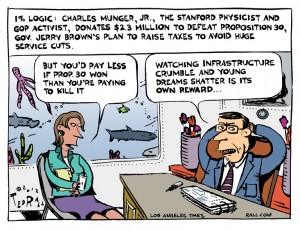I draw cartoons for The Los Angeles Times about issues related to California and the Southland (metro Los Angeles).
This week: In the nearly two decades since Californians voted to bar undocumented immigrants from utilizing public schools and hospitals, the state’s electorate has become increasingly tolerant toward people who are in the country illegally, although it remains tough on border security and enforcement, a new USC Dornsife/Los Angeles Times poll shows. The shift is partly explained by the growing clout of Latinos, who now make up 20% of California voters. But the attitudes of whites also appear to have changed.




